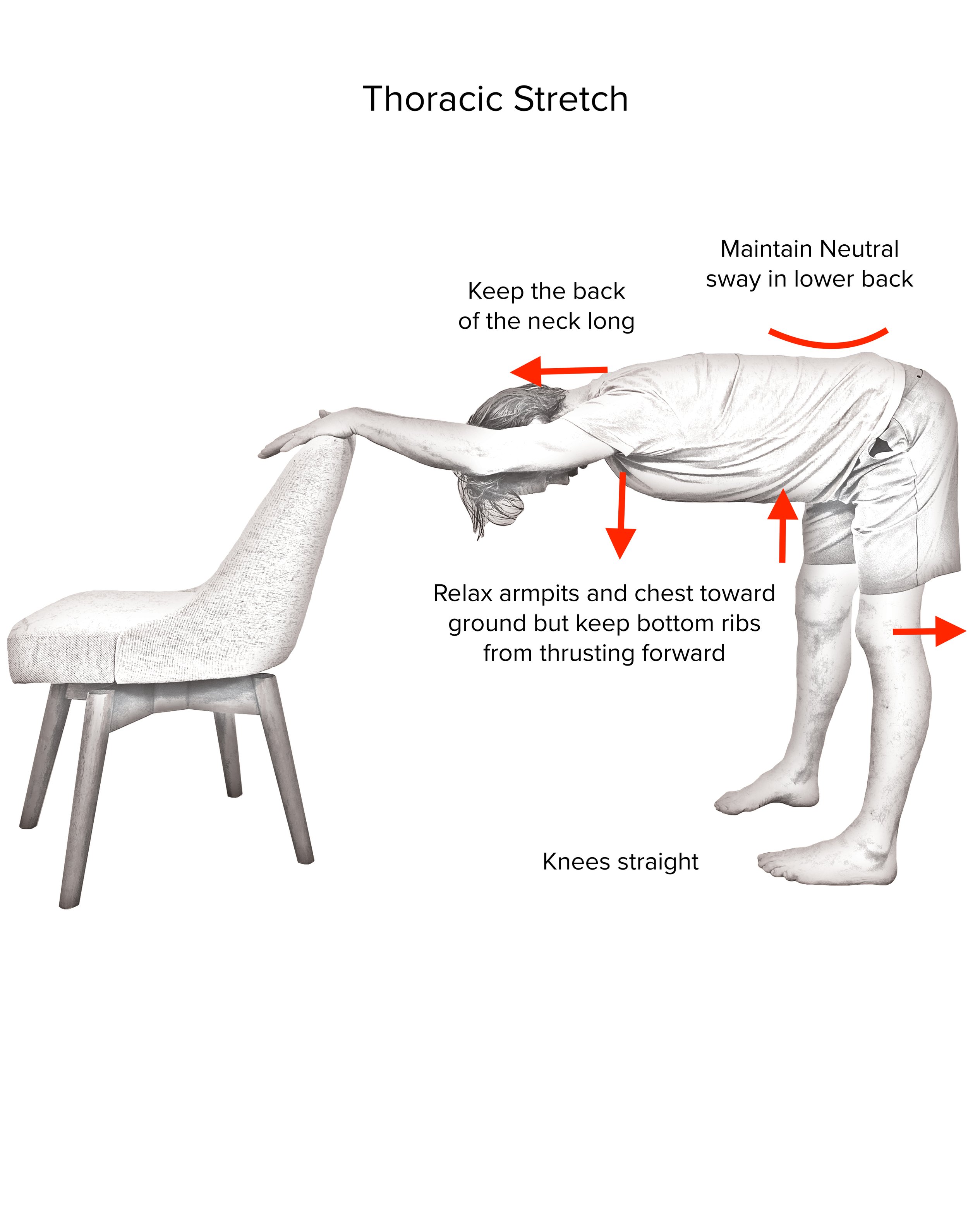Thoracic Stretch
Whether we’re leaning back into the backrest of a set or trying to sit upright, after a while with a lot of sitting, our upper spines will tend to slump forward. An excessive curve in the upper spine is called hyperkyphosis and when the the thoracic spine has a hard time straightening out (there should be some curve, it’s a matter of whether it’s too much) eventually there may be a number of detrimental effects such as:
putting too much load on the lower back when standing
changing our walking gait
causing difficulty in our breathing
The Thoracic Stretch is a good way to offset that slouching of the upper back.
Use a wall or the outside of a vehicle
Place your hands on the wall/vehicle and walk your feet back a bit
Then hinge at the hips and shift your hips behind your heels
Your body should end up close to horizontal with the ground with the arms over the head (like a downward dog in yoga but with the hands on a wall instead of the floor)
Allow your chest and armpits to relax toward the ground.
This position puts some traction on the spine with the hips pulling backward while your arms are reaching forward. You can add more traction by reaching the top of your head toward the wall/vehicle. The body being horizontal to the ground helps undo the excessive curves in the upper spine.
Some pointers:
Let your lower back relax and the pelvis tilt forward to keep a neutral sway in the lower back. This will also put some stretch into the hamstrings.
Keep the lower ribs connected to the belly - even holding them up toward the spine/sky. Keeping the lower ribs in place and not letting them thrust forward toward the ground will ensure the stretch goes more to the upper back and shoulders and will not strain the lower back.
Keep your shoulders away from your ears. The stability of the shoulder blades down the back will help the upper spine experience the stretch rather than hyperextending the shoulders themselves.
Relax and don’t push!

